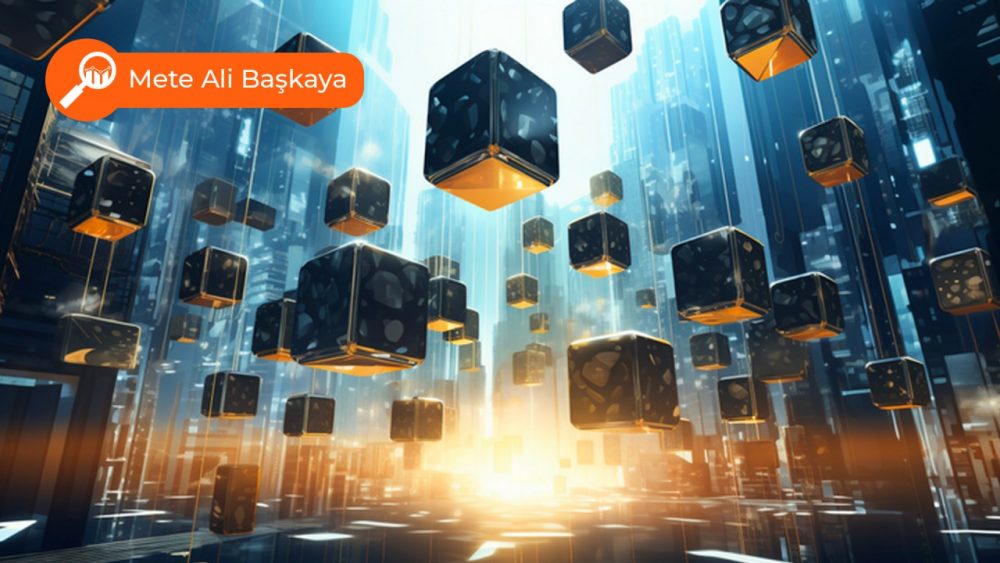The cryptocurrency world is constantly evolving, offering new opportunities for investment. One of these areas is the emergence of real-world assets (RWA) in the crypto world. Real-world assets refer to physical or tangible entities and are tokenized and traded on blockchain networks.
With the power of blockchain technology, these assets can be converted into digital tokens, thereby increasing accessibility and liquidity. Tokenized assets are expected to be a $16 trillion market by 2030.
What is tokenization of real world assets?
Tokenization of real-world assets is the process of converting physical or tangible assets into digital tokens that can be represented on the blockchain. We believe that a more accessible global trading market can be created by enabling off-chain tokenization of assets such as currencies, commodities, stocks, carbon credits, real estate, bonds and works of art.
Tokenization of real-world assets offers a new perspective on asset ownership. These digital tokens facilitate liquidity and improve asset management while providing a faster and more efficient exchange experience. Additionally, the tokenization process eliminates intermediaries such as lawyers, brokers, and banks, making the exchange process transparent and secure for all participants.
What are the advantages of tokenizing real-world assets?
Accessibility and Liquidity:It allows investors to invest even small amounts in real-world assets and increases liquidity.
Cost and Efficiency:It reduces costs and speeds up the clearing process by removing intermediaries and middle men.
Transparency and Trust:It ensures that clearing transactions take place transparently and securely and increases trust.
Global Trade:It creates a global trading environment for real-world assets across borders.
The role of blockchain technology in tokenization of real-world assets
Blockchain technology plays an important role in the tokenization of real-world assets. Blockchain provides a secure environment in which asset ownership is recorded and enables exchange transactions to occur in a transparent manner. It can also automate asset management and eliminate intermediaries thanks to features such as smart contracts.
Blockchain technology provides reliability, transparency and efficiency in the tokenization of real-world assets. For this reason, many large organizations and enterprises have started to use blockchain technology in the tokenization of real-world assets.
Advances in tokenization of real-world assets
There are many developments in the tokenization of real world assets. Tokenization plays an important role in the adoption of real-world assets in the crypto world. As this trend progresses, more investors will have access to real-world assets and the boundaries of global trade will expand.
The future of tokenization of real-world assets
The future of tokenization of real-world assets is bright. With the adoption of this technology, more investors will have access to real-world assets and global trading will become easier. In addition, thanks to tokenization, liquidity will increase and asset management will become more efficient.
With the rapid advancement of developments in the field of tokenization, we can say that the tokenization of real-world assets will have an important role in the crypto world. While this technology will offer new opportunities to investors, it will also make the financial system more secure and transparent.
Successful use cases in tokenization of real-world assets
There are many successful use cases in the tokenization of real-world assets. For example, Ondo Finance launched USD Yield (USDY), a tokenized note collateralized by the US Treasury and its banknotes. Maple Finance, on the other hand, raised a $5 million investment as a DeFi lending protocol and integrated with important projects such as Chainlink to tokenize real-world assets.
These successful use cases demonstrate the potential of tokenization of real-world assets. While this technology offers new opportunities for investors and institutions, it also provides a major transformation in the financial system.
Conclusion
Tokenization of real-world assets represents a new era in the crypto world. Thanks to this technology, investors can invest in assets they could not access before, while liquidity and accessibility increases. Blockchain technology adds transparency, security and efficiency to this tokenization process. Tokenization of real-world assets is expected to become more widespread in the future, which will expand the boundaries of global trade. There are many successful use cases in this area, and tokenization has become an important trend shaping the future of the crypto world.







